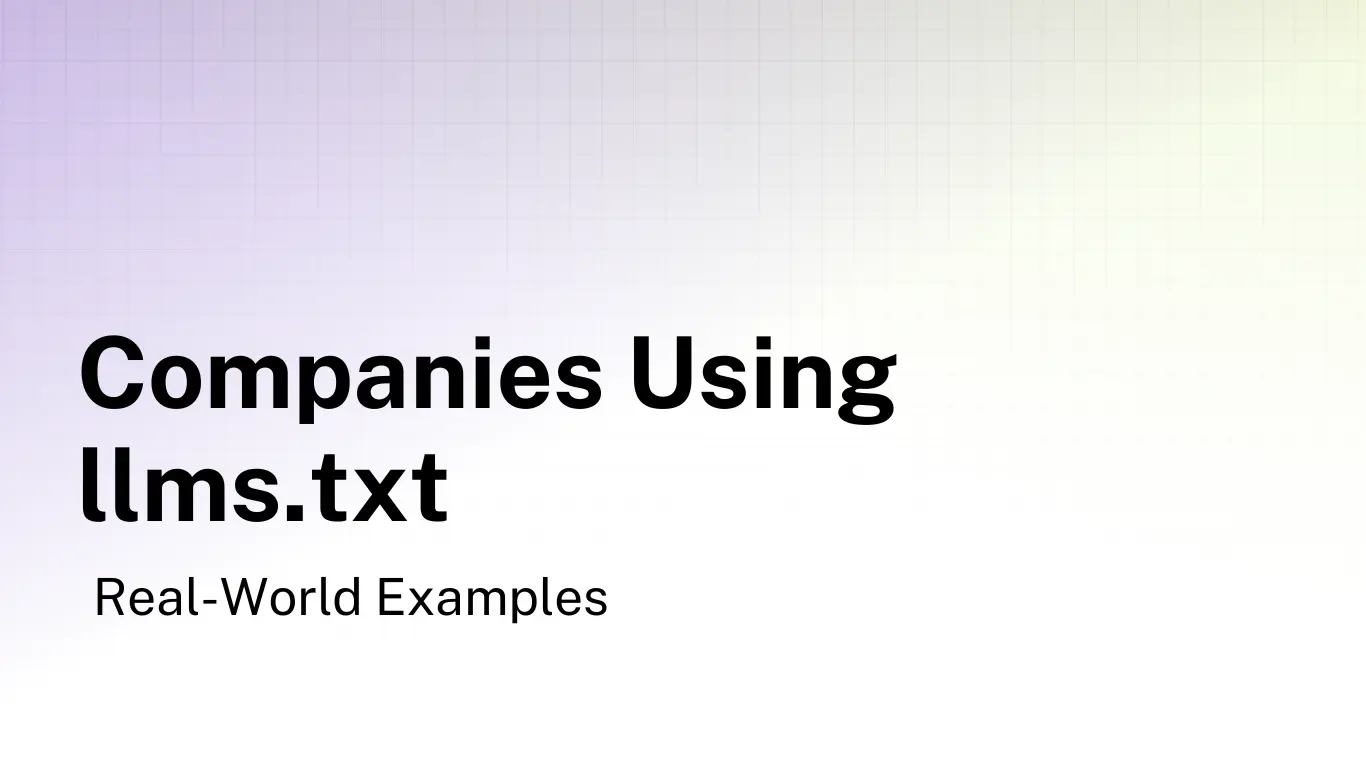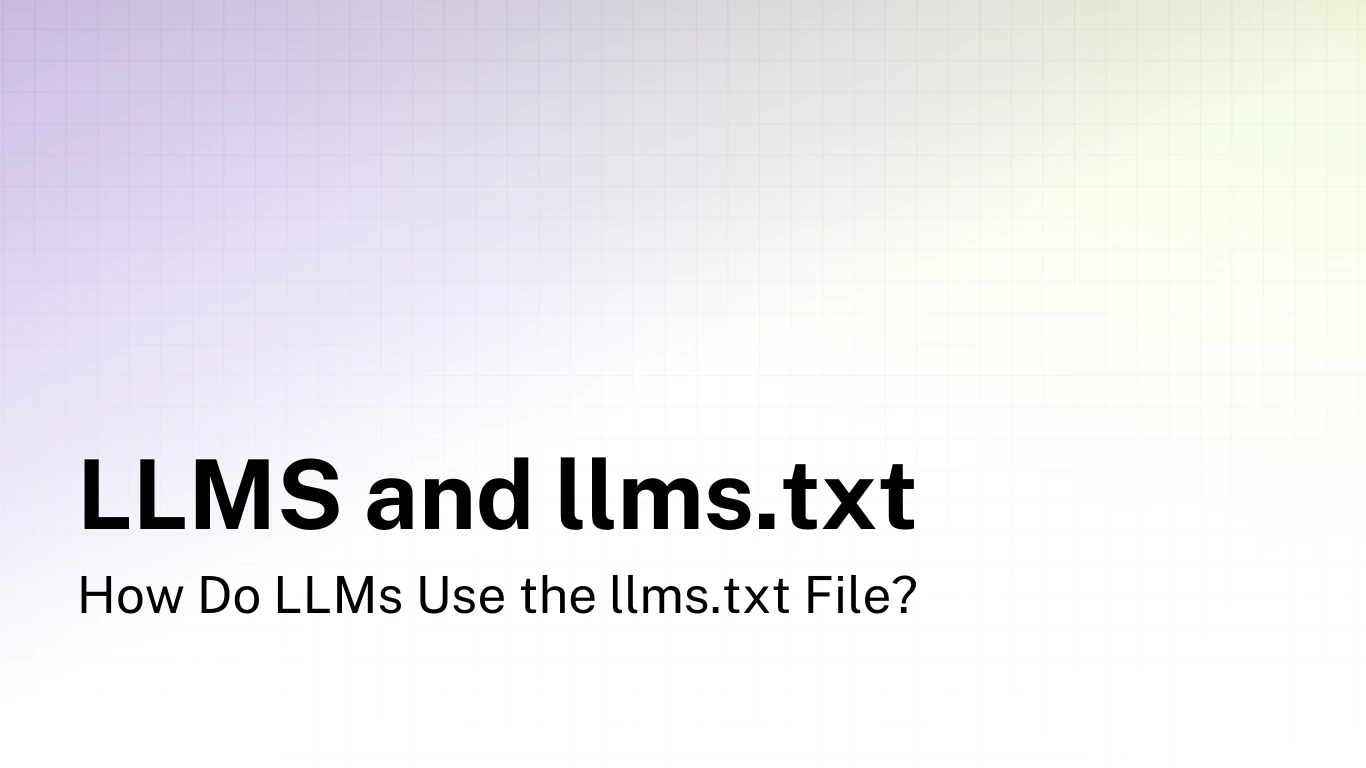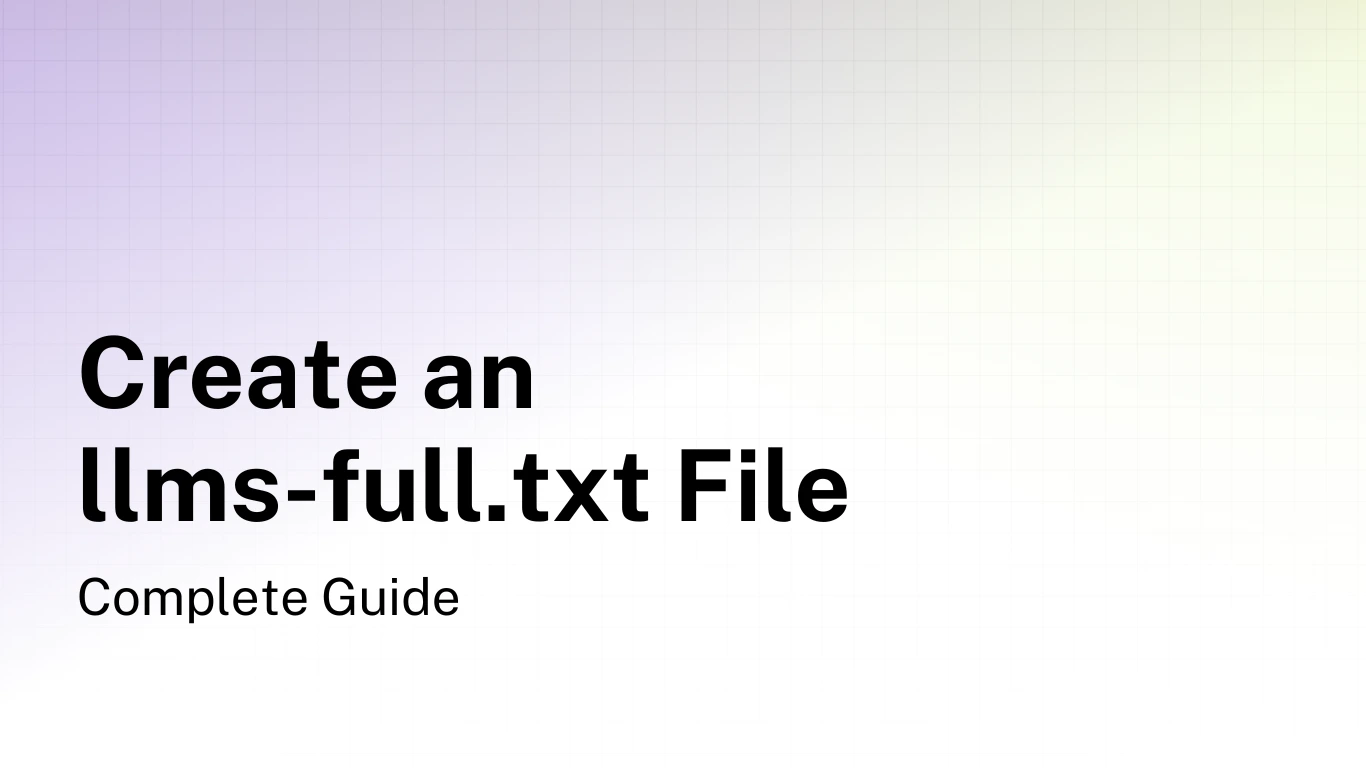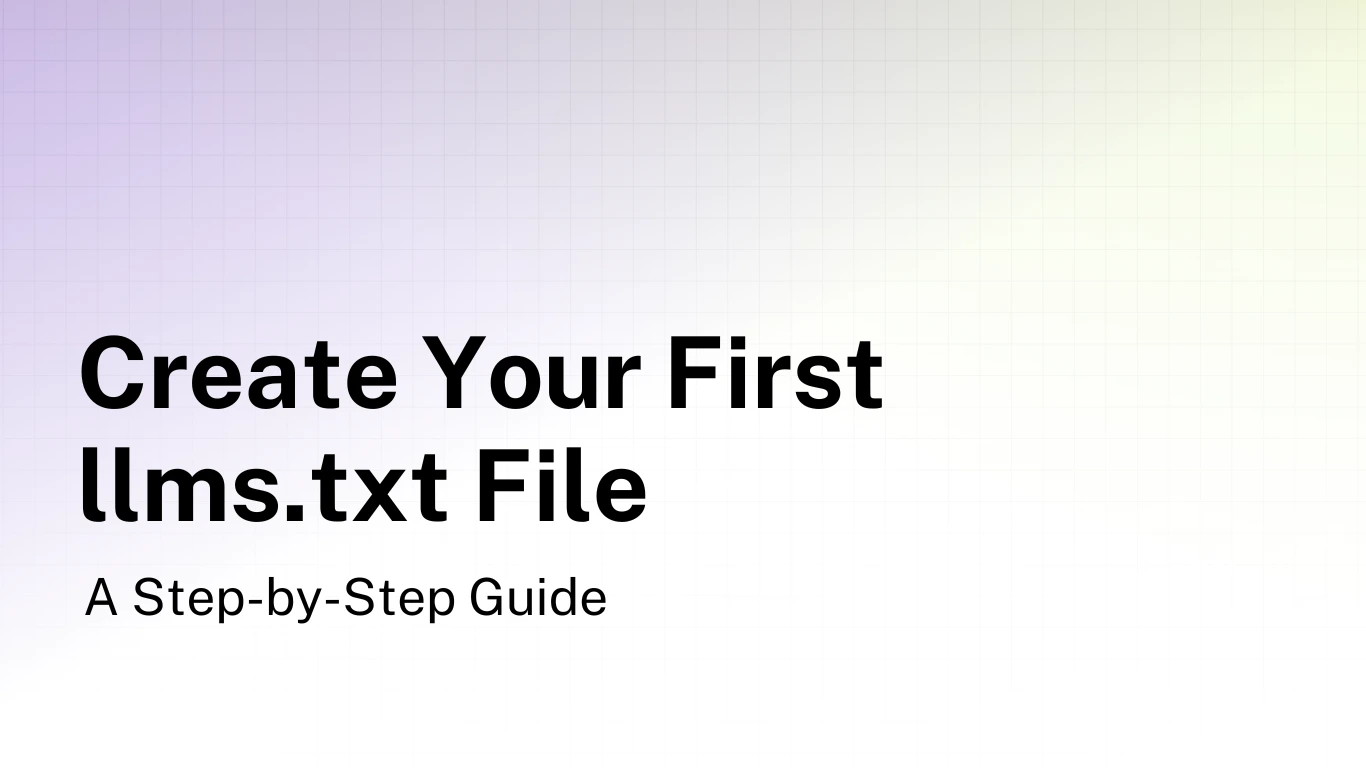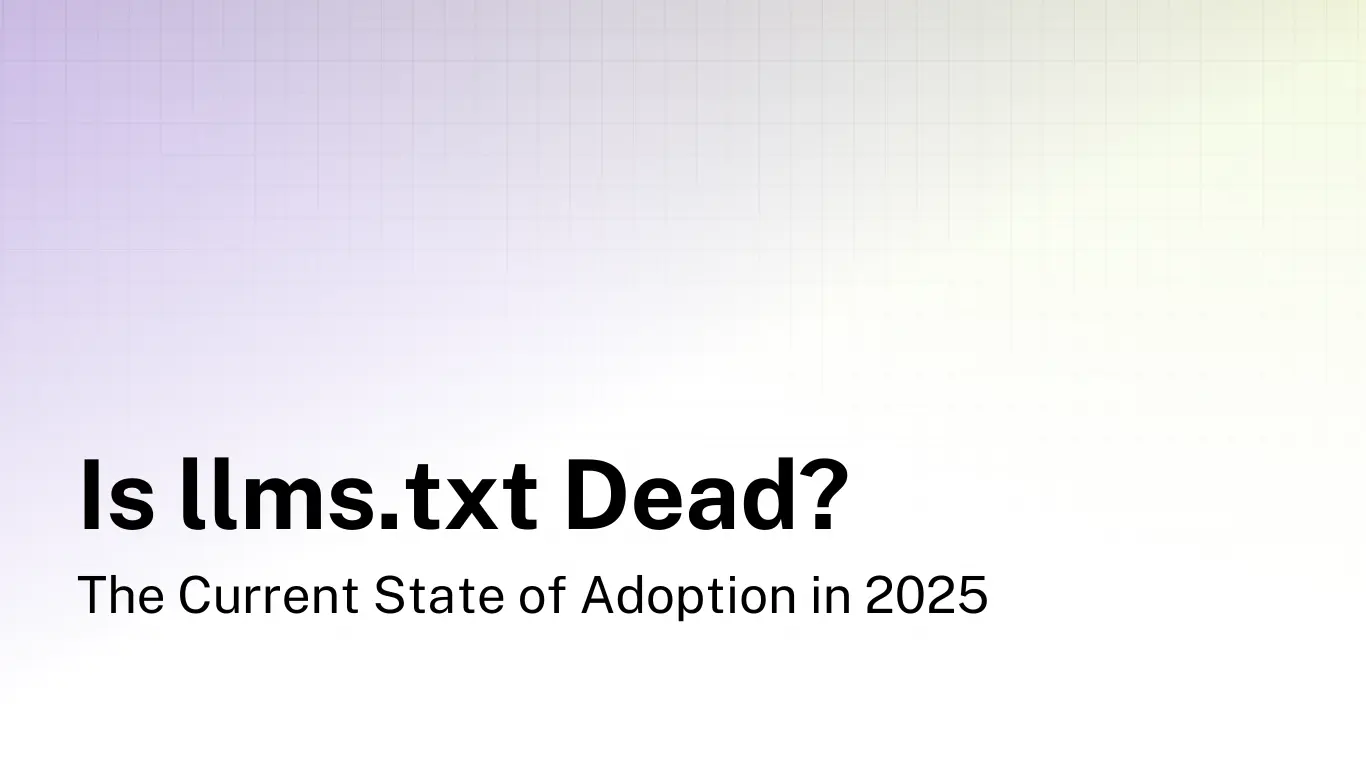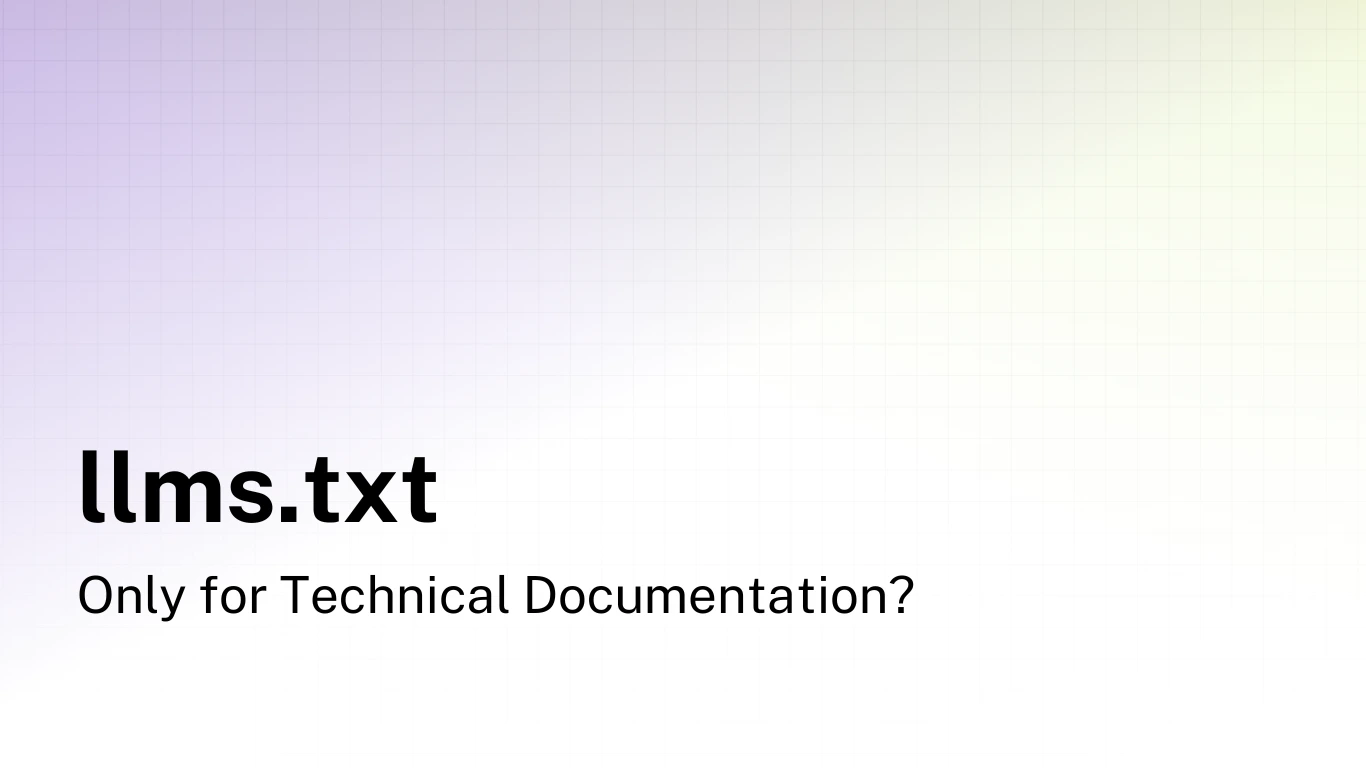Robots.txt vs. llms.txt: Understanding the Difference
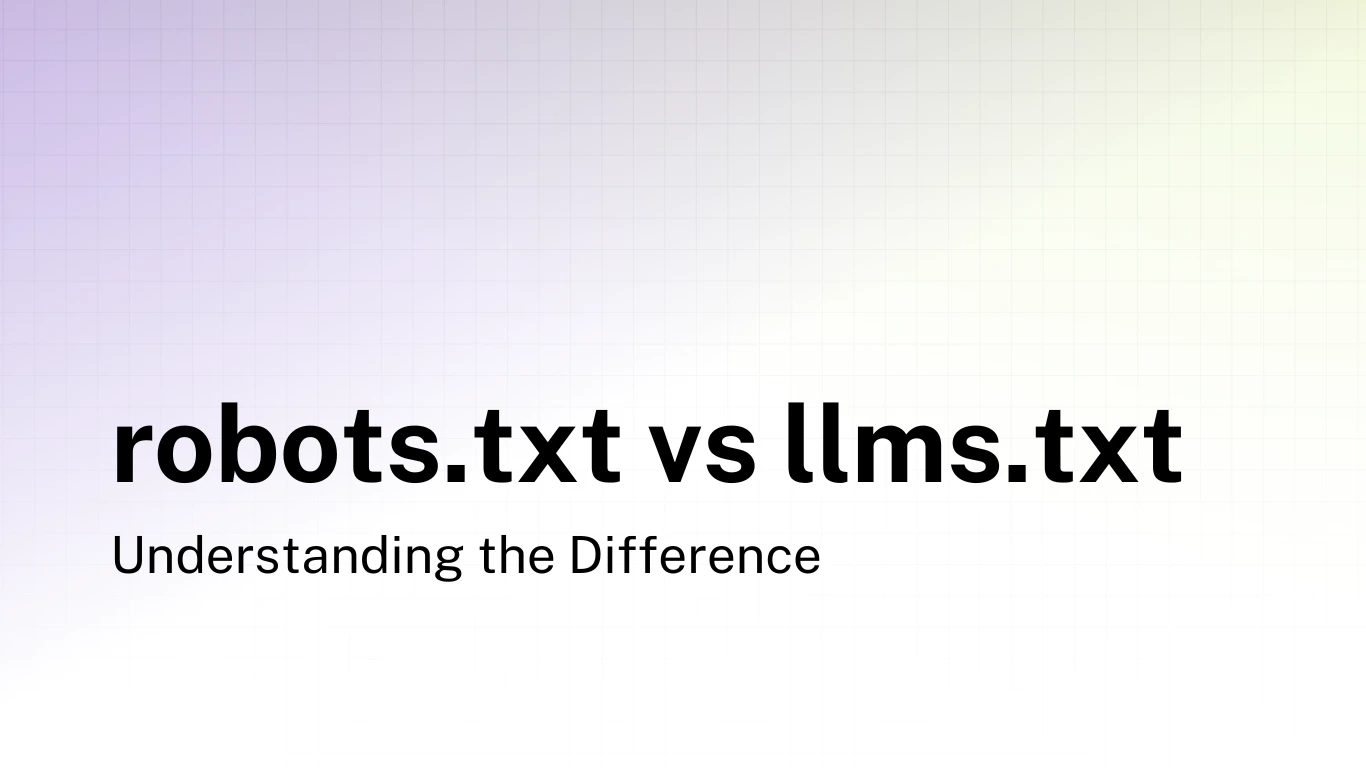
When I first heard about llms.txt files, my immediate thought was, "Is this just another robots.txt?" After all, both files live at the root of a website and provide guidance to automated systems. But as I dug deeper, I discovered they serve fundamentally different purposes for different audiences.
If you're managing a website in 2025, understanding these differences is crucial. While robots.txt has been a staple of web development for decades, llms.txt represents a new frontier in making your content accessible to AI systems.
Let's explore the key differences between these two files and why your website might need both.
A Tale of Two Text Files
Both robots.txt and llms.txt are plain text files that live at the root of your website, but they speak to different audiences and serve different purposes:
| Feature | robots.txt | llms.txt |
|---|---|---|
| Primary audience | Web crawlers (search engines) | AI language models |
| Purpose | Control crawler access | Provide organized content |
| Format | Simple directive syntax | Structured markdown |
| Content focus | Access permissions | Content organization |
| Age | Since 1994 | Since 2024 |
Let's look at each of these files in more detail.
What is robots.txt?
A robots.txt file tells web crawlers (like those from Google, Bing, or other search engines) which parts of your website they're allowed to access and index. It follows a simple protocol called the Robots Exclusion Protocol.
Here's a basic example:
User-agent: *
Disallow: /private/
Disallow: /admin/
Allow: /public/
Sitemap: https://example.com/sitemap.xml
This tells all web crawlers:
- Don't crawl anything in the /private/ directory
- Don't crawl anything in the /admin/ directory
- You may crawl the /public/ directory (this is redundant as crawlers can access anything not specifically disallowed)
- The sitemap can be found at the specified URL
The Purpose of robots.txt
The primary purpose of robots.txt is access control. It's a way to:
- Prevent crawlers from accessing private or sensitive areas
- Reduce server load by preventing crawling of unimportant pages
- Direct crawlers to your sitemap for more efficient indexing
- Apply different rules to different search engines or bots
Importantly, robots.txt is about what crawlers can and cannot access, not about how they should interpret or understand your content.
What is llms.txt?
In contrast, an llms.txt file is designed to help AI language models understand and navigate your website's content effectively. It uses markdown formatting to provide structure and context.
Here's a simplified example:
# Project Name
> This project helps developers build scalable applications with our framework.
## Documentation
- [Getting Started](https://example.com/docs/getting-started.md): A beginner's guide
- [API Reference](https://example.com/docs/api.md): Complete API documentation
## Examples
- [Basic Usage](https://example.com/examples/basic.md): Simple examples for beginners
The Purpose of llms.txt
The primary purpose of llms.txt is content organization and accessibility. It helps:
- Provide a clear overview of what your website or project is about
- Organize content into logical sections
- Link to markdown versions of important pages
- Optimize for AI context windows by prioritizing important content
- Make your content more useful when referenced by AI assistants
Unlike robots.txt, llms.txt is all about helping AI systems understand and navigate your content effectively, not about restricting access.
Key Differences in Practice
The differences between these files become even clearer when we look at how they're used in practice:
1. Access Control vs. Content Organization
- robots.txt: "Don't look at these pages, only look at those pages."
- llms.txt: "Here's what my website is about, and here's where to find the most important information."
2. Format and Structure
- robots.txt: Simple directive-based format with User-agent, Allow, Disallow, and Sitemap directives.
- llms.txt: Structured markdown with headings, blockquotes, and formatted links providing rich context.
3. Content Detail
- robots.txt: Contains no actual content from your website, just crawling instructions.
- llms.txt: Contains a summary of your website and links to detailed content, often with descriptions.
4. Integration with Other Files
- robots.txt: Often references sitemap.xml, which lists all pages on your site.
- llms.txt: Often links to markdown versions of pages (with .md extensions) and may have a companion llms-full.txt file containing comprehensive content.
Why Your Website Needs Both
These files serve complementary purposes in an AI-enhanced web ecosystem:
- robots.txt ensures search engines index the right pages, improving your SEO and protecting sensitive content.
- llms.txt ensures AI assistants understand your content correctly, improving how your website is represented when people ask AI tools about your content.
Here's why having both is important:
- Without robots.txt, search engines might index pages you don't want public or waste resources crawling unimportant pages.
- Without llms.txt, AI models might misinterpret your content or fail to understand its structure and importance.
Implementation Best Practices
If you're implementing these files on your website, here are some best practices:
For robots.txt:
- Be specific about which directories should be disallowed
- Include a link to your sitemap
- Test your robots.txt using Google's testing tool
- Remember that robots.txt is a suggestion, not a security measure
Example of a well-structured robots.txt:
User-agent: *
Disallow: /admin/
Disallow: /private/
Disallow: /tmp/
Disallow: /cgi-bin/
User-agent: Googlebot
Allow: /public-for-google-only/
Sitemap: https://example.com/sitemap.xml
For llms.txt:
- Start with a clear, concise summary of your website or project
- Organize content into logical sections with H2 headings
- Provide helpful descriptions for each link
- Use the "Optional" section for less critical information
- Ensure linked markdown files are actually accessible
Example of a well-structured llms.txt:
# My SaaS Project
> A cloud-based project management tool for development teams.
This project helps teams collaborate effectively with features for task tracking, code review, and documentation.
## Core Features
- [Task Management](https://example.com/features/tasks.md): Create, assign, and track tasks
- [Code Review](https://example.com/features/code-review.md): Streamlined review workflows
## Documentation
- [User Guide](https://example.com/docs/user-guide.md): Complete user documentation
- [API Reference](https://example.com/docs/api.md): API endpoints and usage
## Optional
- [Release Notes](https://example.com/releases.md): History of version updates
- [Contributing Guide](https://example.com/contributing.md): How to contribute to the project
The Future: Working Together
As AI continues to evolve, the relationship between robots.txt and llms.txt will likely become more integrated. We might see:
- AI-aware search engines that use both files to better understand content
- Extensions to robots.txt that incorporate some llms.txt functionality
- Standards for how these files interact with each other
For now, implementing both files on your website ensures you're ready for both traditional search engines and the new wave of AI assistants.
Conclusion
While robots.txt and llms.txt might seem similar at first glance, they serve fundamentally different purposes in the web ecosystem:
- robots.txt controls how web crawlers access your site, protecting private content and optimizing crawling.
- llms.txt helps AI language models understand and navigate your content, providing structure and context.
By implementing both files on your website, you ensure your content is properly handled by both search engines and AI systems, maximizing your visibility and usefulness in an increasingly AI-driven web landscape.
Additional Resources
- Google's Guide to robots.txt - Official documentation on robots.txt implementation
- Official llms.txt Proposal - The original proposal by Jeremy Howard
- llms.txt Directory - Examples of llms.txt implementations across the web

